-By FOOD IS POWER
Chocolate is a product of the cacao bean, which grows primarily in the tropical climates of Western Africa, Asia, and Latin America. The cacao bean is more commonly referred to as cocoa, so that is the term that will be used throughout this article. Western African countries, mostly Ghana and the Ivory Coast, supply about 70% of the world’s cocoa. The cocoa they grow and harvest is sold to a majority of chocolate companies, including the largest in the world.
In the past few decades, a handful of organizations and journalists have exposed the widespread use of child labor, and in some cases slavery, on cocoa farms in Western Africa. Child labor has been found on cocoa farms in Cameroon, Guinea, Nigeria, and Sierra Leone, although since most of Western Africa’s cocoa is grown in Ghana and the Ivory Coast, the majority of child labor cases have been documented in those two countries.
In recent years, evidence has also surfaced of both child labor and slavery on cocoa farms in Brazil. Cocoa workers there face many of the same abuses as those on the cocoa farms of Western Africa.
Aside from cocoa production in Western Africa and Brazil, a significant amount of cocoa is also grown in other parts of Latin America. While it remains possible that some cocoa farms in these places may employ child labor or slavery, at this time, neither practice has been documented as prevalent on cocoa farms outside of Western Africa and Brazil.
Over the years, the chocolate industry has become increasingly secretive, making it difficult for reporters to not only access farms where human rights violations still occur, but to then disseminate this information to the public. In 2004, the Ivorian First Lady’s entourage allegedly kidnapped and killed a journalist reporting on government corruption in its profitable cocoa industry. In 2010, Ivorian government authorities detained three newspaper journalists after they published an article exposing government corruption in the cocoa sector.
The farms of Western Africa and Brazil supply cocoa to international giants such as Hershey’s, Mars, and Nestlé as well as many small chocolate companies—revealing the industry’s direct connection to the worst forms of child labor, human trafficking, and slavery.












